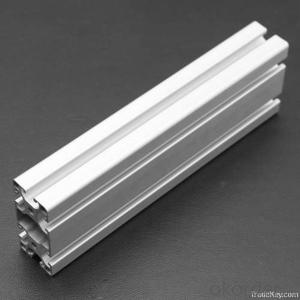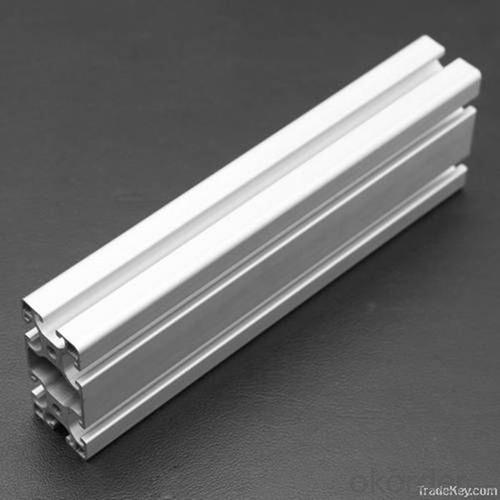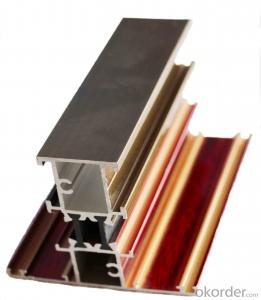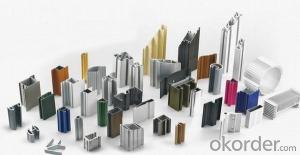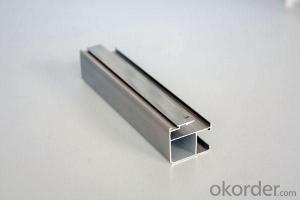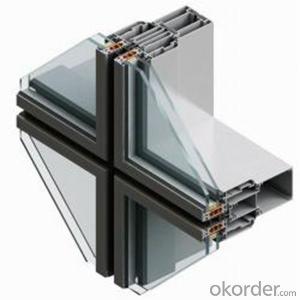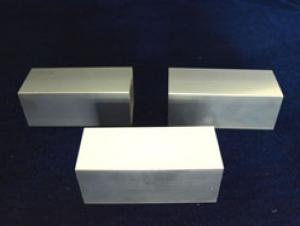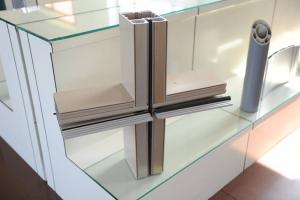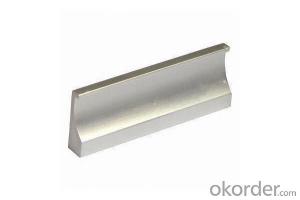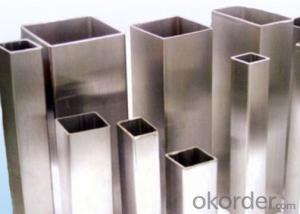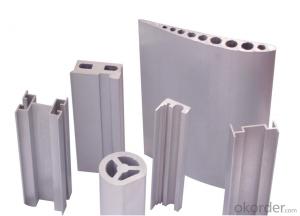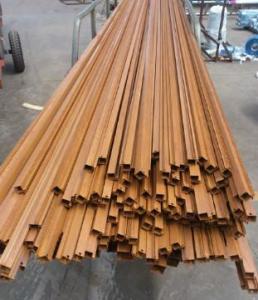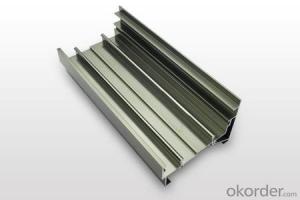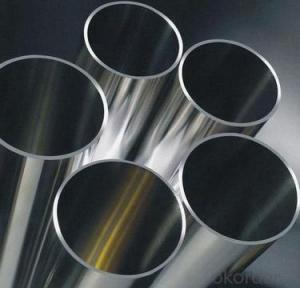Aluminum Window Profiles - Silver Finish Anodized Aluminum Profile for Glass Door Shower Design
- Loading Port:
- Shanghai
- Payment Terms:
- TT OR LC
- Min Order Qty:
- 5 m.t.
- Supply Capability:
- 1000 m.t./month
OKorder Service Pledge
OKorder Financial Service
You Might Also Like
Specification
1. Specification of Silver Finish Anodized Aluminum Profile for Glass Door Shower Design
Alloy | State | Tensile Strength δbMpa | Non-proportional Stretching Stress(δp0.2Mpa) | Stretching rate (δ%) | Pattern Thickness (mm) | HV | HW |
No Less Than | |||||||
6061 | T4/T6 | 180/265 | 110/245 | 16/8 | - | - | - |
6063 | T5/T6 | 160/205 | 110/180 | 8/8 | 0.8/- | 58/- | 8/- |
6063A | T5/T6 | 200,190/230,220 | 160,150/190,180 | 5,5/5,4 | 0.8,0.8/-,- | 65,65/-,- | 10,10/-,- |
2. Application of Silver Finish Anodized Aluminum Profile for Glass Door Shower Design
wall cladding, ceilings, bathrooms, kitchens and balconies, shutters, doors,windows…
3. Feature of Silver Finish Anodized Aluminum Profile for Glass Door Shower Design
Surface Quality :
Be free from Oil Stain, Dent, Inclusion, Scratches, Stain, Oxide Decoration, Breaks, Corrosion, Roll Marks, Dirt Streaks and other defect which will interfere with use,
Mochenical Property:
Chemical Composite and Mechanical Property
4. Certificate:
SGS and ROHS(if client request, paid by client), MTC(plant provided), Certificate of Origin(FORM A, FORM E, CO), Bureau Veritas and SGS (if client request, paid by client), CIQS certificate
5. Image of Silver Finish Anodized Aluminum Profile for Glass Door Shower Design
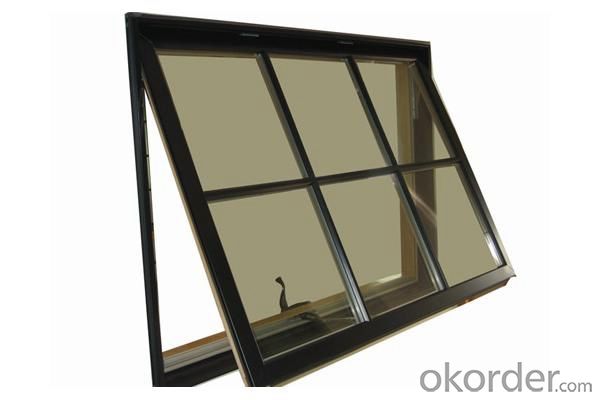
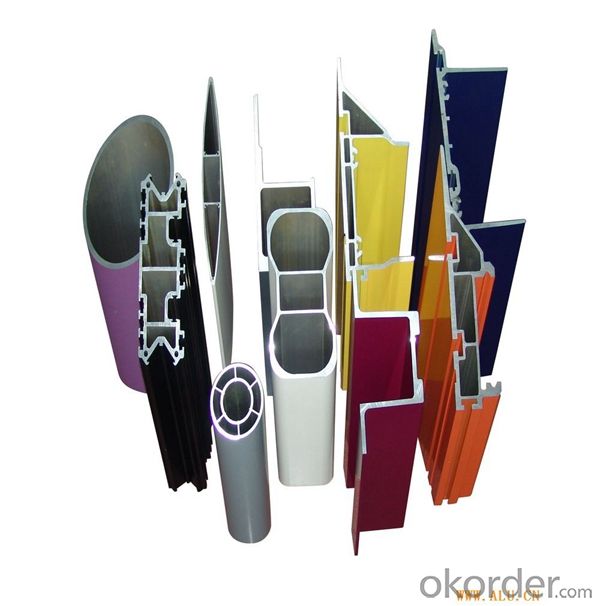
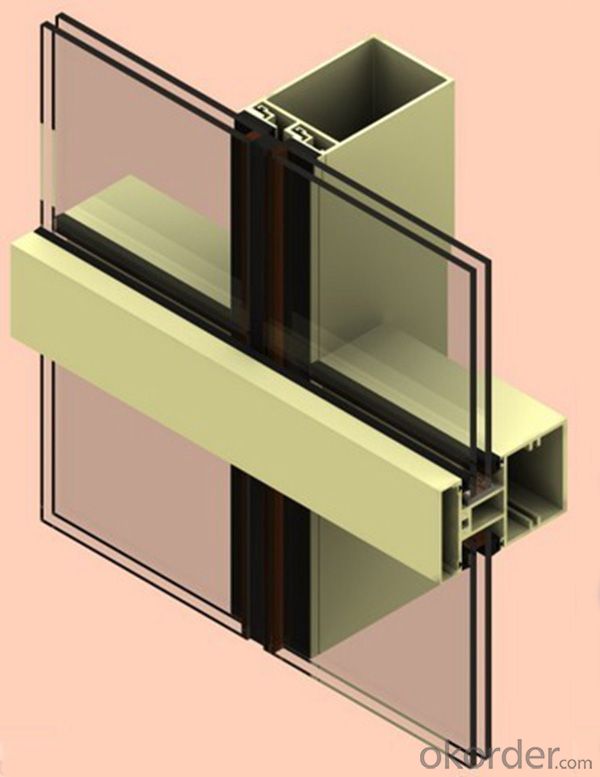
6. Package and shipping of Silver Finish Anodized Aluminum Profile for Glass Door Shower Design
First, plastic cloth with drying agent inside; Second, Pearl Wool; Third, wooden cases with dry agent, fumigation wooden pallets, aluminum surface could cover blue PVC film
7. FAQ
Question 1: What is your MOQ?
We accept one ton per type for an order. But the detail we could negotiate.
Question 2: What is your normal terms of payment?
We always trade with you by T/T. But we also accept the L/C as you require.
Question 3: How many kinds of the surface treatment we can choose?
You could choose different color of powder coated. Anodized of black. matte silver, nature, champagne, bronze color. Mill finished. Wooden finished and printed.etc.
Question 4: Can you supply OEM services?
We offer OEM services for 17 years.
Question 5: How many days for opening the mould?
Normally about 10 days.According to the difficulty of your drawing.
Question 6: Can i choose the package what i want?
Yes, of course. We offer various kinds of package.e.g.PE foam. Shrink film. Wrapping paper.
But we would give you professional suggestion of package.
- Q: Can aluminum profiles be utilized in creating distinctive architectural structures?
- <p>Yes, aluminum profiles can be used to create unique architectural designs. They are favored for their strength, lightweight, and corrosion resistance. Architects can utilize aluminum's flexibility to design complex structures, such as intricate facades, modern window systems, and innovative support frameworks. Aluminum's adaptability allows for both functional and aesthetically pleasing designs, making it a popular choice in contemporary architecture.</p>
- Q: What are the aluminum packaging methods?
- The common packing methods of aluminum profile are every cotton covered cotton, each sleeve bag, coat plastic bag, two wire binding line, three point wrapping paper, outsourcing cotton (outsourcing paper), etc..
- Q: Can aluminum profiles be used in signage or display applications?
- Yes, aluminum profiles can be used in signage or display applications. Aluminum profiles are lightweight, durable, and versatile, making them suitable for various applications such as sign frames, display stands, and exhibition booths. Additionally, aluminum profiles can be easily customized and offer a sleek and modern appearance, making them a popular choice in the signage and display industry.
- Q: How do you prevent discoloration or fading of aluminum profiles?
- To prevent discoloration or fading of aluminum profiles, there are several steps that can be taken: 1. Regular cleaning: It is essential to regularly clean aluminum profiles to remove any dirt, dust, or contaminants that can cause discoloration or fading. This can be done using a mild detergent or a specialized aluminum cleaner, followed by rinsing with clean water. 2. Avoid abrasive cleaners: Harsh or abrasive cleaners can cause damage to the surface of aluminum profiles, leading to discoloration or fading. It is important to use gentle cleaning products specifically designed for aluminum. 3. Protective coatings: Applying a protective coating to the surface of aluminum profiles can help prevent discoloration and fading. There are different types of coatings available, such as clear coats or anodizing, that provide a protective barrier against environmental factors. 4. Avoid exposure to harsh elements: Aluminum profiles should be protected from prolonged exposure to harsh elements like direct sunlight, extreme temperatures, or chemicals. These factors can accelerate the discoloration or fading process. If the profiles are installed outdoors, consider providing adequate shading or protective covers to minimize exposure. 5. Regular maintenance: Regular inspection and maintenance of aluminum profiles can help identify any early signs of discoloration or fading. Promptly addressing any issues, such as scratches or surface damage, can prevent further deterioration. 6. Proper storage: If aluminum profiles are not immediately installed, it is important to store them in a dry and well-ventilated area, away from moisture or direct sunlight. Proper storage can help maintain the integrity of the profiles and prevent premature discoloration or fading. By following these preventive measures, it is possible to prolong the lifespan and maintain the aesthetic appeal of aluminum profiles, minimizing the risk of discoloration or fading.
- Q: Can aluminum profiles be used for solar power systems?
- Yes, aluminum profiles can be used for solar power systems. Aluminum is commonly used in the construction of solar panels and mounting structures due to its lightweight, corrosion-resistant, and durable properties. It provides a stable framework for solar panels and helps to maximize their efficiency by allowing for easy installation and adjustment of the panels. Additionally, aluminum profiles have excellent thermal conductivity, which aids in dissipating heat generated by the solar panels.
- Q: This question asks for a description of the various dimensions and forms of aluminum profiles that are utilized in siding systems.
- <p>Aluminum profiles for siding systems come in a variety of sizes and shapes to accommodate different architectural styles and structural requirements. Common profiles include flat bars, channels, angles, and Z-profiles. Sizes can range from narrow trims of 10mm to wide panels of over 200mm in width, with thicknesses typically from 0.5mm to 3mm. Shapes are designed for specific functions, such as interlocking for a seamless appearance, or with grooves for attaching insulation. Custom profiles are also available for unique applications. These profiles are chosen based on the building's design, load-bearing needs, and aesthetic preferences.</p>
- Q: What are the different bending radii available for aluminum profiles?
- Depending on the specific application requirements, the available bending radii for aluminum profiles can vary. However, aluminum profiles typically offer a range of bending radii options to accommodate different needs. Common bending radii for aluminum profiles include 1.5D, 2D, 3D, and 4D. In these radii, the "D" refers to the outer diameter of the profile. For instance, a 1.5D bending radius indicates that the bend radius is 1.5 times the outer diameter of the profile. The choice of bending radius depends on various factors, such as the thickness and alloy of the aluminum, the desired bending angle, and the intended application. Smaller bending radii are often employed for tighter bends or when a more compact design is necessary. Conversely, larger bending radii are suitable for gentler bends or when maintaining the structural integrity of the profile is crucial. It is important to note that the bending process can impact the mechanical properties of the aluminum profile, including its strength and stiffness. Therefore, it is crucial to carefully consider the bending radius to ensure that the profile retains its desired properties post-bending. To determine the most appropriate bending radius for a specific aluminum profile, it is advisable to seek guidance from manufacturers or experts knowledgeable in aluminum bending processes. They can offer valuable insights based on the specific requirements and limitations of the application.
- Q: Can aluminum profiles be used in telecommunications infrastructure?
- Yes, aluminum profiles can be used in telecommunications infrastructure. Aluminum is a lightweight and versatile material that offers several advantages in telecommunications applications. It is corrosion-resistant, which makes it suitable for outdoor installations where it may be exposed to harsh weather conditions. Aluminum profiles are also easy to fabricate and can be customized to meet specific requirements, such as mounting brackets, cable trays, or equipment racks. In addition, aluminum profiles have excellent electrical conductivity, which is crucial in telecommunications infrastructure to ensure efficient signal transmission. They can be used for various purposes, including the construction of transmission towers, antenna supports, and base stations. Furthermore, aluminum is a sustainable material as it can be recycled repeatedly without losing its properties. This aligns with the growing focus on environmental sustainability in the telecommunications industry. Overall, aluminum profiles offer a cost-effective and reliable solution for telecommunications infrastructure, providing durability, flexibility, and excellent electrical conductivity.
- Q: How is the thickness of the base plate of the aluminum profile radiator calculated? Are there formulas for calculation?
- There should be empirical formula, the heat of the surface heat dissipation is related to thermal conductivity, thickness, temperature change, surface area. Then the best thickness is calculated by linear programming.
- Q: How do aluminum profiles perform in terms of magnetic properties?
- Aluminum profiles have very low magnetic properties, meaning they are not easily attracted or influenced by magnetic fields.
Send your message to us
Aluminum Window Profiles - Silver Finish Anodized Aluminum Profile for Glass Door Shower Design
- Loading Port:
- Shanghai
- Payment Terms:
- TT OR LC
- Min Order Qty:
- 5 m.t.
- Supply Capability:
- 1000 m.t./month
OKorder Service Pledge
OKorder Financial Service
Similar products
Hot products
Hot Searches
Related keywords
